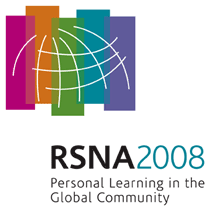
Abstract Archives of the RSNA, 2008
Basak Erguvan Dogan MD, Presenter: Nothing to Disclose
Ana Gonzalez-Angulo MD, Abstract Co-Author: Nothing to Disclose
Michael Gilcrease MD, PhD, Abstract Co-Author: Nothing to Disclose
Mark Joseph Dryden MD, Abstract Co-Author: Nothing to Disclose
Selin Carkaci MD, Abstract Co-Author: Nothing to Disclose
Wei Tse Yang MD, Abstract Co-Author: Nothing to Disclose
Triple receptor-negative (TRN) breast carcinomas show no expression of ER, PR and HER2 and present a radiological challenge due to the lack of typical mammographic findings of malignancy. The aim of this study is to review mammography, ultrasound, and MRI characteristics of TRN cancers in order to define typical imaging characteristics for diagnosis.
44 patients with TRN breast carcinoma, who underwent mammography, ultrasound, and MRI at the time of initial diagnosis, were retrospectively reviewed. Patient age, tumor size, histological subtypes were recorded. Lesion characterization was performed using the ACR BI-RADS© lexicon on all three imaging modalities.
Median patient age at presentation was 32 years (range, 23-61). The average tumor size was 5.8 cm (range, 1-13 cm). One patient did not have mammogram available for review. On mammography, TRN cancers were not visible in 9% (4/43), presented as a mass in 58% (25/43), focal asymmetry in 19% (8/43), and calcifications only in 7% (3/43). 65% (15/23) of masses were round or oval, and 35% (8/23) had circumscribed margins. On ultrasound, 91% (40/44) of tumors were masses, and 7% (3/44) occult. 50% of these masses (19/38) were oval or round in shape and 16% (6/38) showed circumscribed margins with posterior acoustic enhancement. MRI demonstrated all 44 cancers. Mass-like enhancement was seen in 77% (34/44) of tumors, rim enhancement in 76% (26/34), and washout kinetic curves in 90% (40/44).
Despite the large tumor size at presentation, TRN breast cancers may be occult on mammography or ultrasound. When visible, TRN cancers have frequent benign or indeterminate features on mammography and ultrasound. MRI identifies all TRN cancers, and demonstrates rim enhancement pattern and washout kinetics in the majority of tumors, leading to a high positive predictive value for malignancy
MRI is the most useful diagnostic tool in the accurate diagnosis and staging of this aggressive subtype of breast carcinoma, which may present with negative or benign mammography and ultrasound.
Dogan, B,
Gonzalez-Angulo, A,
Gilcrease, M,
Dryden, M,
Carkaci, S,
Yang, W,
Mammography, Ultrasound and MRI Findings in Triple Negative Breast Carcinomas. Radiological Society of North America 2008 Scientific Assembly and Annual Meeting, February 18 - February 20, 2008 ,Chicago IL.
http://archive.rsna.org/2008/6015267.html

